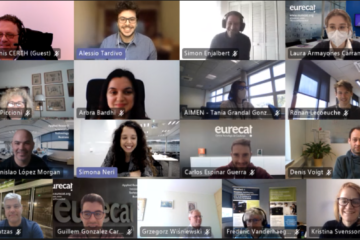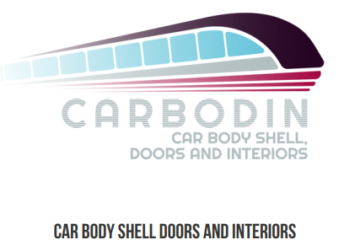CARBODIN 2nd General Assembly held remotely on 8 and 9 June 2021
The second General Assembly of the Shift2Rail JU-funded CARBODIN project was held online on 8 and 9 June with participants from all 13 partners in seven countries.
CARBODIN will contribute to enhancing the attractiveness and competitiveness of the European railway system by providing innovative car body, door and interior manufacturing strategies, user-friendly and accessible doors, tools for modular interiors and virtual immersive interior design and novel human-machine interactions for innovative driving cabins.
Simona Neri, Project Coordinator, welcomed the participants and gave an overview of project progress, with a particular focus on the composition of the consortium, signature of the COLA and an update on the deliverables. The Work Package leaders then introduced the 12 WPs, highlighting the objectives and explaining progress on each task. The Assembly proved a valuable forum for discussion of project progress and how to ensure that it will contribute to the success of the European railway system.
The overarching objective of CARBODIN is to improve car body shell manufacture by exploring the possibilities offered by composite materials. To this end, CARBODIN advocates for modular tooling to manufacture a wide range of parts of varying size. In addition, the project will propose a process combining different production techniques, automation concepts and the introduction of co-cured and co-bonded composite parts and multi-material integrated joints and inserts. CARBODIN will also test intelligent sensor nodes to reinforce predictive maintenance.
Composite materials will also be the core element of cost-efficient doors with reduced life cycle cost. CARBODIN will create modular tooling processes combined with 3D technology enabling the production of lighter doors with enhanced thermal and acoustic properties.
Another area in which CARBODIN will push forward the adoption of composite materials is the design of attractive train interiors by developing a configuration tool based on virtual reality. Innovative manufacturing tools will also complement the configuration tool for interior components. In this context, the project will also investigate other strategies for improving the cost-effectiveness of manufacturing processes, such as integrating low-volt circuits in panels.
Finally, CARBODIN aims to enhance the performance of future human-machine interface systems by means of a European survey to identify key interactions such as drivers’ gestures or voices.
To find out more about CARBODIN, please visit Zenodo and follow the project on Twitter and LinkedIn.
This project has received funding from the Shift2Rail JU under the European Union’s Horizon 2020 research and innovation programme under Grant Agreement 881814.
For further information, please contact Alessio Tardivo at alessio@eurnex.eu.


